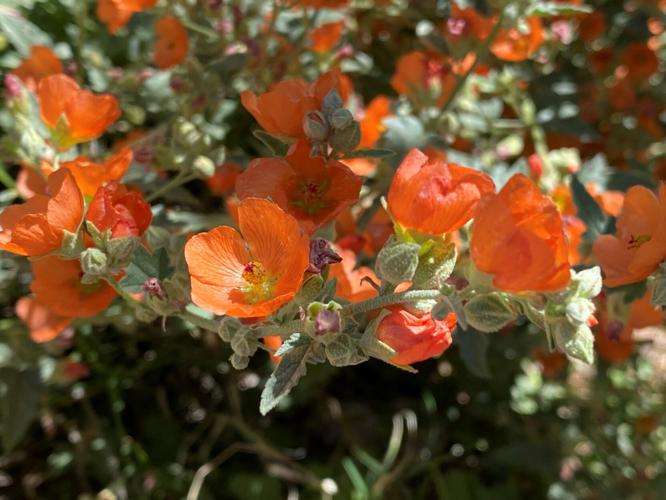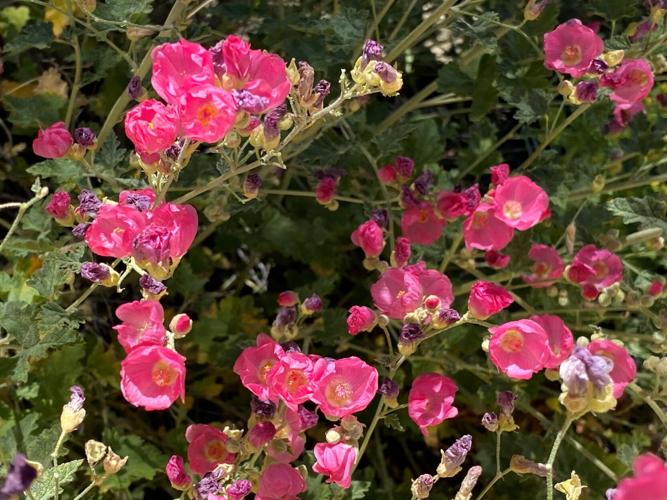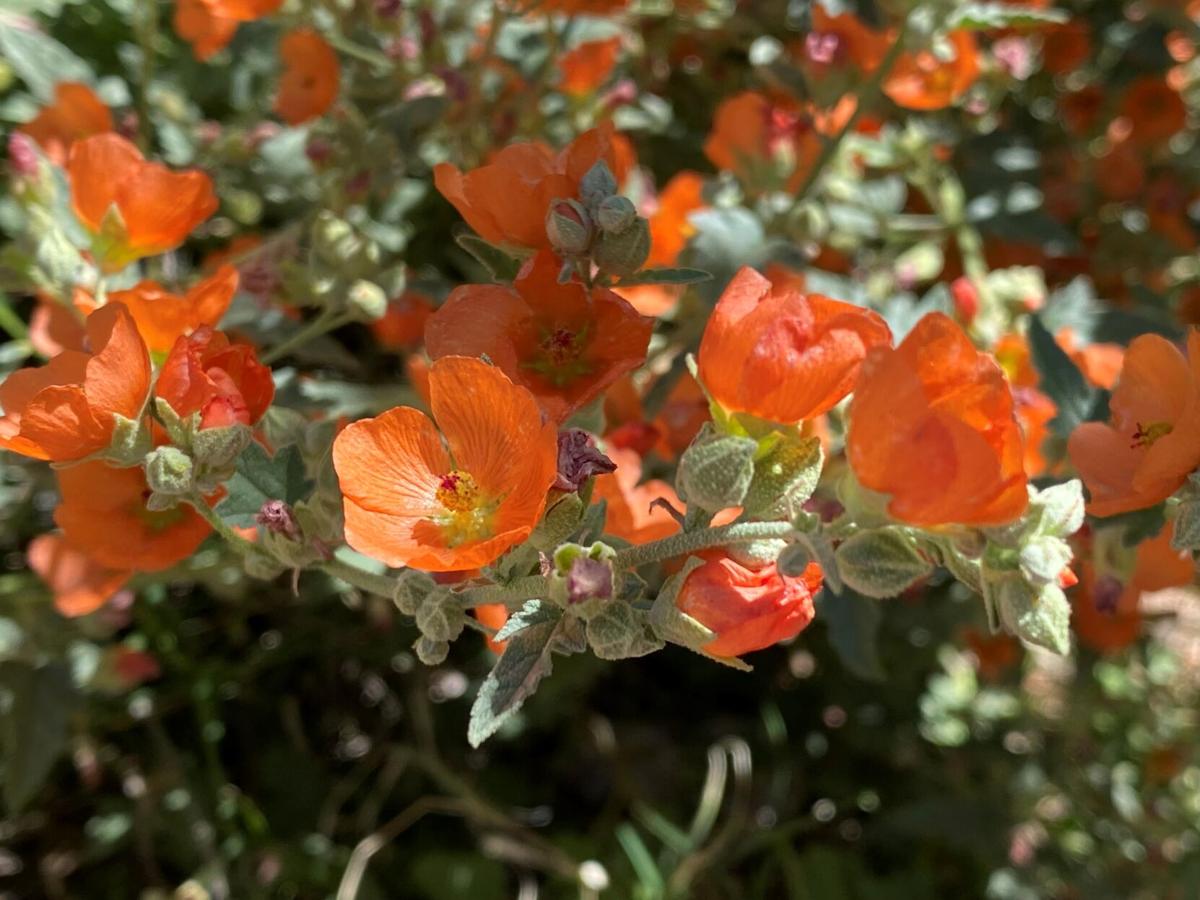The desert globe mallow, Sphaeralcea ambigua, is one of my favorite flowering shrubs. It is native to our Sonoran Desert, and is a great pollinator plant. It’s also a gorgeous addition to your garden.
This mid-size shrub is very drought-tolerant and fast growing. Even if you start with a small 1-gallon plant, within a couple of years it will grow to be 3 feet wide and about as tall. Keep this in mind as you decide where to plant it. It loves full sun — in my garden it thrives in southern and southwestern exposures. It blooms around this time, and is a wonderful source for native pollinators. The tiny globe mallow bee, Diadasia diminuta, is one of its chief pollinators, and frequently sleeps in the flowers to stay warm in our cool desert nights.

You can find different colors of globe mallows in nurseries, including this lovely vibrant pink.
In the wild, you will see its unique apricot-orange claret-cup shaped flowers, particularly in riparian areas. Nurseries will also have a couple of color varieties, such as a hot pink and a light lavender, which are very beautiful and thrive just as nicely. The flowers grow along graceful stalks, and the overall shape is mound-like with silvery-green leaves.
If you notice it volunteering in your garden, my recommendation is to let it grow! My volunteer globe mallows don’t require any additional watering and look great year round. I sometimes need to cut them back a bit to keep them from taking over the yard, but I pretty much let them thrive.

You can also find light lavender colored globe mallows in local nurseries.
They are excellent native plants if you want a cottage garden vibe. The foliage is evergreen, and is beautiful even after flowering ends. I’ve noticed my globe mallows flower a second time if we have a good monsoon season. If you water them intermittently you can probably get flowers through the fall. They are hardy to around 5 degrees Fahrenheit which makes them great plants even for cooler microclimates and higher elevations.
It is likely to reseed in your garden, particularly if you have volunteers already. I don’t see that as a problem — free plants! — but you can always pull them out if they are growing somewhere undesirable. Make sure you wear gloves when handling the plants, as they have tiny hairs on their leaves which may irritate your skin.
Sustainable gardens have a very positive impact on the environment and local wildlife.







